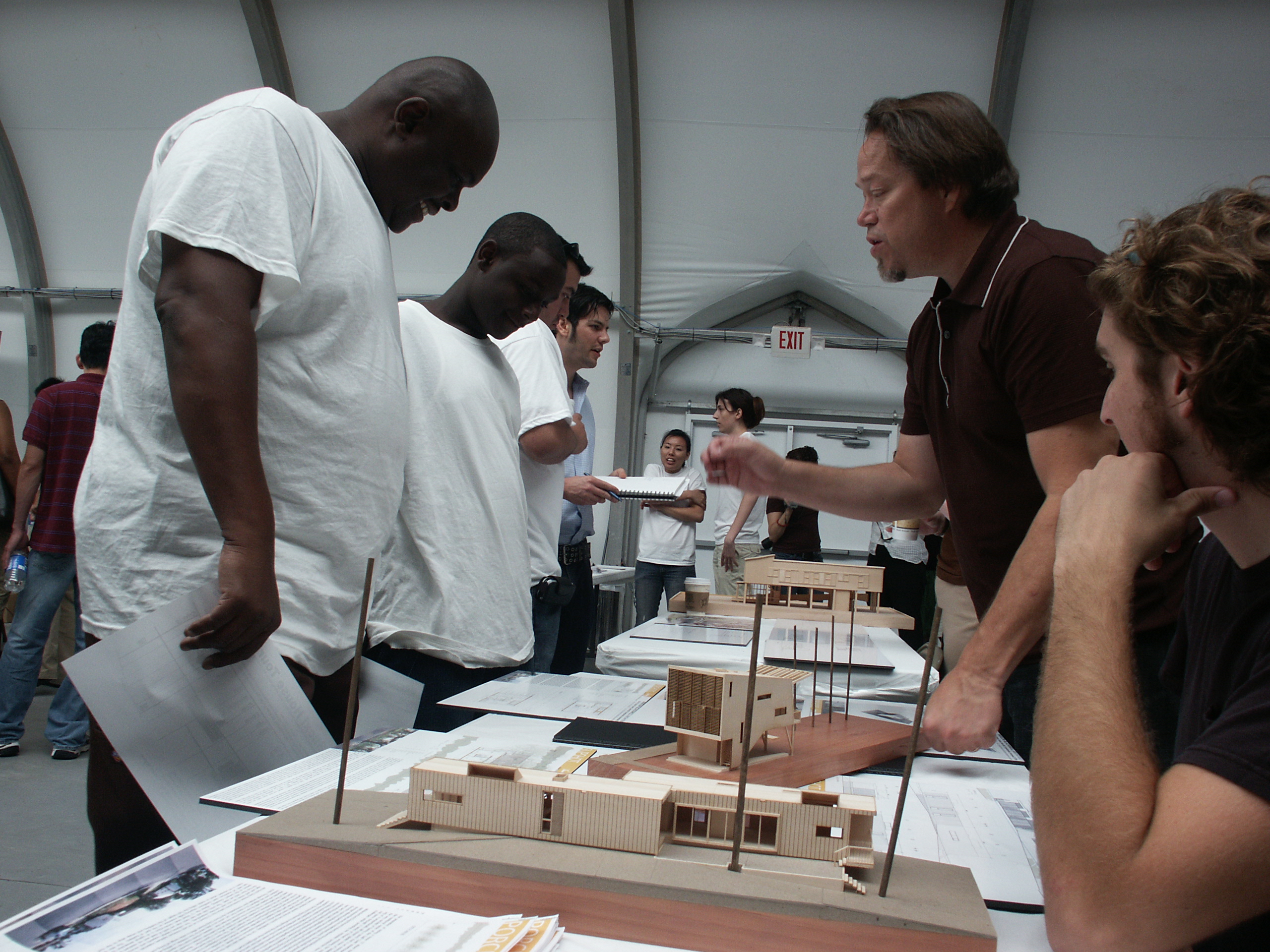
FAYETTEVILLE, Ark. — University of Arkansas professor Marlon Blackwell has generated a completely new model for storm-proof coastal housing that will reunite a family struggling to recover from Hurricane Katrina. Blackwell’s “PorchDog” house — a kind of bulldog/camper hybrid crafted almost entirely from steel — is one of seven designs that will be built this year by Architecture for Humanity and its partners in East Biloxi, Miss., where Katrina wiped out approximately 3,500 homes. Groundbreaking on the project is scheduled for Friday, July 13, at 251 Holley St.
“It was a chance to test out a housing type and provide some alternatives to neo-traditional housing designs that are primarily nostalgic in conception,” Blackwell said. “This house is practical for the 21st century, instead of the 19th.”
The opportunity was not without its challenges. At the August housing fair in Biloxi that launched the program, Blackwell and his staff promoted their design to the general public without knowing who the clients were. A tour of participating families and their destroyed homes followed the housing fair.
“It was eye opening and touching. These folks have been toughing it out in FEMA trailers for months and refused to leave — this place is part of them,” Blackwell said. After a final breakfast meeting between architects and families that Blackwell likened to a beauty pageant or speed dating — “we didn’t want to promote ourselves too much, but we wanted to connect,” he said — the families voted, and Blackwell’s design made the cut.
Richard Tyler, a housepainter, single father and lifelong resident of Biloxi, chose Blackwell’s design “because my kids liked it, mostly,” he said. “I’ve never seen anything like it — but it’ll work for me. It sure beats the FEMA trailer!” he said with a chuckle. Indeed, the 1,500-square-foot, $120,000 house will reunite him with his sons Richard Jr., 21, and Zarek, 14, who are currently living with their mother while Tyler camps out in the 250-square-foot trailer provided by the Federal Emergency Management Agency.
Perched 11 feet above the street to meet the new FEMA flood regulations in Biloxi, the PorchDog offers sturdy steel beam construction, low-maintenance ribbed metal siding and a shaded porch that wraps around the base of the three-story house. The design maximizes panoramic ocean views with a shutter system in front and three 7-foot by 12-foot operable shutters in back that roll up to expand living space onto the balcony. The three-bedroom, two-bath interior includes an office/study area that could be rented out to generate income for the family.
|
Client Richard Tyler and daughter Tiana learn that his home will be built. |
"For us this is a wonderful opportunity to give a family that would never otherwise be able to afford an architect - let alone one of Blackwell's caliber - the design services they need to build back better and safer after Katrina," said Kate Stohr, co-founder of Architecture for Humanity.
Blackwell’s PorchDog was one of five model home designs selected by Architecture for Humanity to be posted to Open Architecture Network. Renderings, elevations and CAD files for Blackwell’s design are available online to facilitate use of the PorchDog as a prototype for sustainable, storm proof design. Like open source software, the site is designed to foster collaboration and creative problem solving.
“This is new for me,” Blackwell said. “I think the idea of sharing ideas, sharing collective responses to environmental tragedies is a good one. We think we have a good design that can be deployed in many different regions and contexts.”
Architecture for Humanity is partnering with the East Biloxi Coordination Relief and Redevelopment Center to finance and build the pilot homes. Funds for the program came from Oprah Winfrey’s Angel Network, the Hurricane Katrina Relief Campaign, a fund of the McCormick Tribune Foundation, and donations from individuals and groups around the country. For more information on the Biloxi Model Home Project visit http://www.architectureforhumanity.org/.
Contacts
Marlon Blackwell,
professor of architecture
School of
Architecture
(479) 283-1241, marlon@marlonblackwell.com
Kendall Curlee,
director of communications
School of
Architecture
(479) 575-4704, kcurlee@uark.edu
Laura Galloway,
public relations consultant for Architecture for Humanity
Galloway Media
Group
(212) 260-3708, laura@gallowaymediagroup.com


